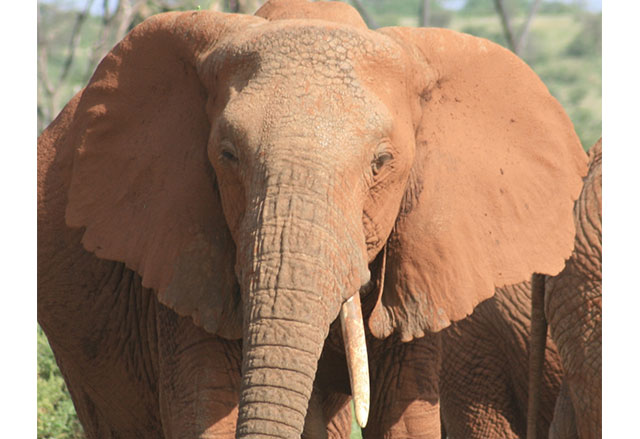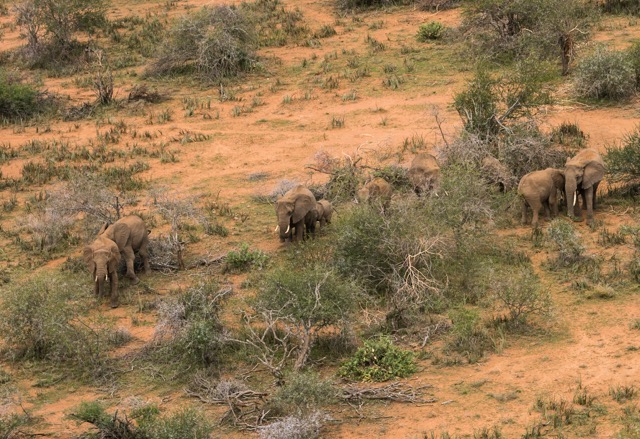Last week during a routine aerial survey into remote Northern Kenya, the Save The Elephants team made a surprising discovery.
About three hours into the flight, near the border of Oldonyiro and Laikipia, we came across a group of collared elephants that had marched over 100 miles in just three days in search of food and water. If this wasn’t remarkable enough, near the group was a long lost matriarch – the one-tusked Ottoman. After a year and a half without seeing her, we’d given her up for dead, but there she was, grazing with her calf and a group of other elephants.
Ottoman, who is in her 50s, is one of the most experienced elephants we know and an elephant that likes to be on the move. As matriarch of the Empires, when she wore a tracking collar she covered more distance than any other collared elephant we’ve followed.
Ottoman is a rare individual. Many of the older females in Samburu were killed during the poaching epidemic of 2009. Poachers not only ended the lives of these magnificent creatures, but also wiped out years of valuable ancestral knowledge and wisdom that the remaining elephants could no longer harness. As a result, many surviving elephants struggled and family groups disintegrated.
The last time we’d seen Ottoman was in May 2016 in the wilderness of the Gotuu/Nakupurat conservancy in North Kenya, about 30kms west of the Empires. She was with a small sub-group of the Empires and was separated from the rest of her family by the presence of a large human settlement blocking her migratory route. When we checked later we saw the Empires being led by the younger collared female Timurid, but there was no sign of Ottoman.
We were particularly worried as the herd were moving through dangerous country. Despite frequent aerial surveys of the area, we never saw Ottoman again and could only assume that she was dead.
The Empires are a fascinating family to study. Like other wild elephant herds we monitor in Samburu, they follow established corridors and make long journeys in search of food and water. The group split with Ottoman leading one group and the second in command, Timirud leading the other. At 27, Timirud is at least half Ottoman’s age. Although the groups graze separately, they are often seen in close proximity to each other suggesting they are a tight unit.
When Ottoman disappeared in May last year with her group, we were worried. Beyond the threat of ivory poachers, elephants lives are at risk in remote Northern Kenya where their migratory routes are increasingly blocked by urban development and new settlements. Elephants sometimes pay the price by being shot at when they accidentally stumble into populated areas.
Protecting Kenya’s wildlife corridors would help combat this problem, and Save The Elephants contributed towards a key report on this subject released this week. Published by the Ministry of Environment, this report will help protect Kenya’s future by setting a framework for the country to undertake landscape planning while conserving natural ecosystems. In turn it will enable wildlife, including elephant families like the Empires, to travel freely through the country.
Fortunately our story has a happy ending. Discovering the great Ottoman from the air last week was not only a surprise but a huge relief. We have no idea where she’s been the past year with her group and her discovery has left us with lots of questions. Do some elephant families travel on long journeys together as Ottoman often did with the Empires, only to split when they get to safe places? And could it be that older matriarchs prepare younger females for succession as Ottoman might have been doing by allowing Timirud to lead half of the group?
One thing we do know, is that elephants constantly surprise us. Finding Ottoman also reminds us why we should never rush to conclusions when it comes to a pachyderm’s life. Elephants still have so much to teach us about their lives, their networks and their family bonds and we should never take anything at face value.
National Geographic’s Pete McBride was in the plane when they discovered Ottoman and produced this beautiful film.



